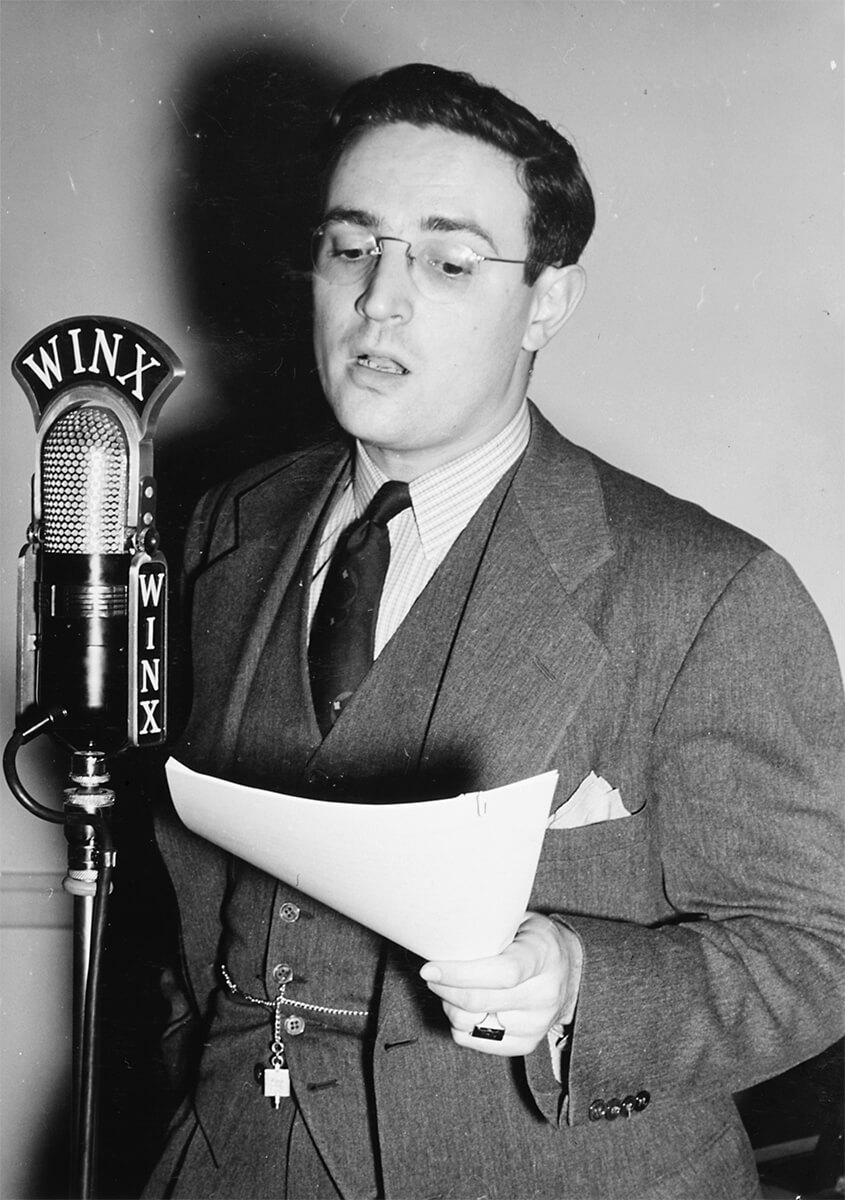William Paul Gottlieb was an American photographer and newspaper columnist who is best known for his classic photographs of the leading performers of the Golden Age of American jazz in the 1930s and 1940s. Gottlieb's photographs are among the best-known and widely reproduced images of this era of jazz.
Gottlieb made portraits of hundreds of prominent jazz musicians and personalities, typically while they were playing or singing at well-known New York City jazz clubs. William Gottlieb's subjects included Louis Armstrong, Duke Ellington, Charlie Parker, Billie Holiday, Dizzy Gillespie, Earl Hines, Jo Stafford, Thelonious Monk, Stan Kenton, Ray McKinley, Benny Goodman, Coleman Hawkins, Louis Jordan, Ella Fitzgerald, Toots Thielemans, and Benny Carter.
Gottlieb was born on January 28, 1917, in the Canarsie neighborhood of Brooklyn, and grew up in Bound Brook, New Jersey, where his father was in the building and lumber business. He graduated from Lehigh University in 1938 with a degree in economics. While at Lehigh, Gottlieb wrote for the weekly campus newspaper and became editor-in-chief of
The Lehigh Review. In his last year of college, he began writing a weekly jazz column for the
Washington Post. While writing for the
Post, Gottlieb taught economics at the University of Maryland. After the
Post determined that it would not pay a photographer to accompany Gottlieb's visits to jazz clubs, Gottlieb borrowed a press camera and began taking pictures for his column.
William P. Gottlieb was drafted into the Army Air Corps in 1943 and served as a photography and classifications officer. After World War II, Gottlieb moved to New York City to pursue a career in journalism. He worked as a writer-photographer for
Down Beat magazine, and his work also appeared frequently in
Record Changer, the
Saturday Review, and
Collier's. In 1948, Gottlieb retired from jazz journalism in order to spend more time with his wife, Delia, and children.
After Gottlieb left
Down Beat, he began working at
Curriculum Films, an educational filmstrip company. He founded his own filmstrip company, which was later bought by McGraw Hill. Many of his filmstrips won awards from the Canadian Film Board and the Educational Film Librarians Association. Gottlieb also wrote and illustrated children's books, including several Golden Books such as
The Four Seasons,
Tigers Adventure, and
Laddie the Superdog. He also wrote educational books such as
Science Facts You Won't Believe and Space Flight.
Apart from his photography career, William Gottlieb also played amateur tennis. Gottlieb and his son Steven were often ranked the number one father-and-son ream on the East Coast and were twice ranked among the top ten teams in the US.
Gottlieb married the former Delia Potofsky, daughter of Jacob Potofsky. They had four children, Barbara, Steven, Richard, and Edward. Gottlieb died of complications of a stroke on April 23, 2006, in Great Neck, New York.
In accord with Gottlieb's wishes, his photographs were placed in the public domain. Many of his pictures are used in Wikipedia and other public domain or freely licensed venues.
Source: Wikipedia
It was the love of music that brought the superlative photography of William P. Gottlieb to the world’s attention. Originally a writer and jazz columnist, William figured that columns accompanied with photographs might give him a better chance to be published. During the late 30’s he began photographing jazz musicians to illustrate articles he wrote for the
Washington Post. His weekly feature
“Swing Sessions” was probably the first jazz column in a major newspaper. He simultaneously had radio programs on WRC/NBC and on a local station WINX. At the age of 22 he was Washington’s
“Mr.Jazz”.
After WWII, he became the assistant editor of “Downbeat” where, again, he took photos to augment his writing. At both
The Post and
Downbeat he was only paid just for writing, not for pictures. In 1948, he left the jazz field for a career in publishing with Britannica and McGraw Hill and it wasn’t until his retirement that he resurrected his old jazz photos and in 1979, published
The Golden Age of Jazz, now in its 12th edition of printing. In a review of the book,
The New Yorker wrote,
“Gottlieb stopped photographing jazz musicians in 1948… No one has surpassed him yet.” Today he is still regarded as one of the top jazz photographers of all time.
Although he never resumed taking jazz photos, his photographs have become our most widely reproduced jazz illustrations, having four US postage stamps, 250 record album covers, and having appeared in over 160 exhibitions around the world. He is represented in the
National Portrait Gallery, and his photos were an essential part of the PBS Jazz series by Ken Burns. In 1995, The Library of Congress purchased 1,600 of his jazz photos
“for posterity” and in 1997 he became the first and only photographer to receive the
Downbeat Lifetime Achievement award.
Source: Gallery 270
